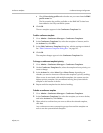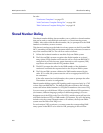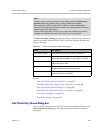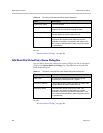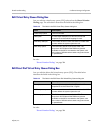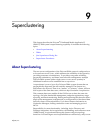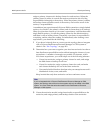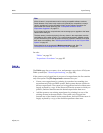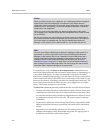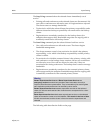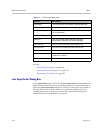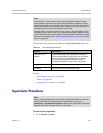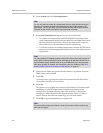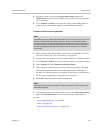
DMAs Superclustering
Polycom, Inc. 211
See also:
“DMAs” on page 211
“Supercluster Procedures” on page 215
DMAs
The DMAs page lets you create, view, and manage a supercluster of Polycom
DMA systems (see “About Superclustering” on page 209).
If the system you’re logged into is not part of a supercluster, the list contains
only that system. The Join Supercluster command lets you:
• Create a new supercluster by pointing it to another free-standing (not
superclustered) Polycom DMA system. Both systems become clusters in
the new supercluster. The system you’re logged into has its local data store
largely replaced by a copy of the data store from the system to which you
joined it, and that data becomes the shared supercluster data store.
• Add the system to an existing supercluster by pointing it to one of the
existing clusters in the supercluster. The system you’re logged into
becomes one of the clusters in that supercluster, and its local data store is
largely replaced by a copy of the shared supercluster data store.
Note
All the clusters in a supercluster must be running compatible software versions.
Patch releases of the same major version will generally be compatible, but major
version upgrades will not be compatible. Major version software upgrades of a
supercluster take careful planning. See “Incompatible Software Version
Supercluster Upgrades” on page 371.
If you’re planning to form a supercluster, we encourage you to upgrade to the latest
version before doing so.
The host names (virtual and physical) of every cluster in the supercluster must be
resolvable by all the other clusters. For a superclustered system, A/AAAA records
on your DNS server(s) for each physical host name, physical IP address, and virtual
host name are mandatory. See “Add Required DNS Records for the Polycom DMA
System” on page 22.
Superclustering is not supported in Maximum security mode. See “The
Consequences of Enabling Maximum Security Mode” on page 52.



